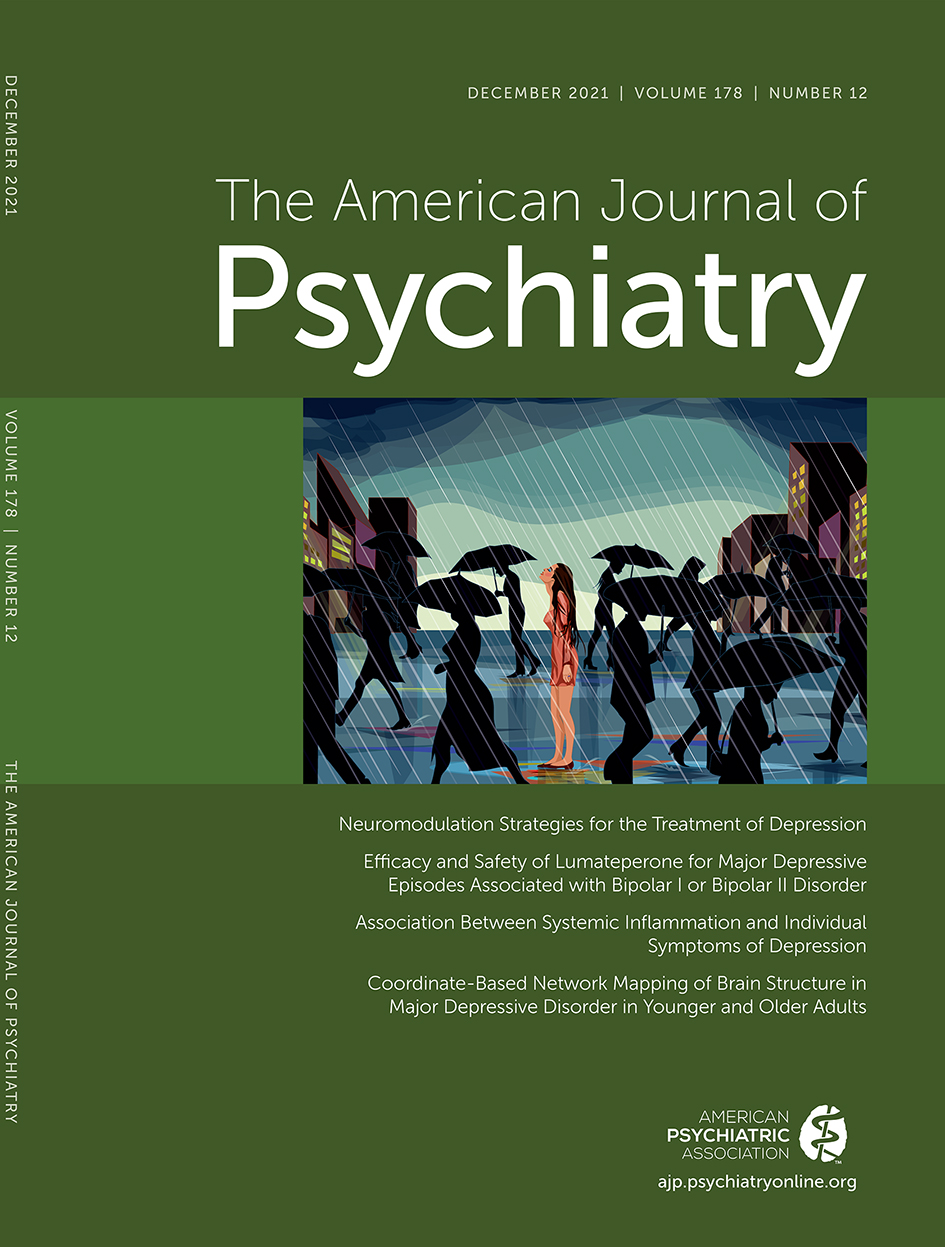Mechanisms of Action of Ketamine and Esketamine
TO THE EDITOR: I am writing in reference to the article by Roger McIntyre et al. (1) on ketamine. The article is generally well done, but I write to voice some reservations. For one, the article claims that ketamine is a strong NMDA receptor antagonist and a weak mu opioid agonist. However, the recent paper by Bonaventura et al. (2) indicated that ketamine and esketamine bind to three receptors—kappa, mu, and NMDA—at similarly low micromolar strengths. Indeed, as Bonaventura et al. note, the canonical NMDA antagonist MK-801 has an affinity at the NMDA receptor that is 1,000-fold greater than that of ketamine. Thus, the statements in the McIntyre paper regarding affinity to these receptors are incorrect and misleading. Moreover, the effects of ketamine on mu receptors may also include release of endogenous opioids (3, 4).
Similarly, the article also mischaracterizes the study from Krystal et al. (5) on ketamine plus intramuscular naltrexone in depressed alcoholics as demonstrating the “significant antidepressant effects” of ketamine in subjects who were treated weekly over 4 weeks. That statement is not true. There was no statistical significance reported in the Krystal pilot study. Indeed, we have reported (6) in response to their letter that there are a number of problems with their pilot study—there was no randomization; no placebo control; no blinding; and no peer review. Their pilot included five patients of whom one showed no antidepressant response with one ketamine infusion and dropped out. Another patient showed no antidepressant response for three ketamine infusions over the first 3 weeks but seemed to respond at week 4 when naltrexone blood levels would be low. The other three are from not clear responders because the baseline ratings right before the infusions were not used for the baseline measure but some other baseline was used—perhaps at screening. In the Williams et al. study (4), oral naltrexone given 40 minutes before the ketamine infusion was significantly more likely to block the antidepressant effects of ketamine than was placebo. The study was conducted under double-blind random assignment conditions, and the baseline measure used was that immediately before the infusion. To use another baseline rating when one has the immediate score available makes little sense and can distort the actual naltrexone effect on ketamine. The McIntyre et al. article makes a false equivalence in comparing the two studies.
1. : Synthesizing the evidence for ketamine and esketamine in treatment-resistant depression: an international expert opinion on the available evidence and implementation. Am J Psychiatry 2021; 178:383–399 Link, Google Scholar
2.
3. : Central antinociception induced by ketamine is mediated by endogenous opioids and μ- and δ-opioid receptors. Brain Res 2014; 1562:69–75 Crossref, Medline, Google Scholar
4. : Attenuation of antidepressant effects of ketamine by opioid receptor antagonism. Am J Psychiatry 2018; 175:1205–1215 Link, Google Scholar
5. : Association of combined naltrexone and ketamine with depressive symptoms in a case series of patients with depression and alcohol use disorder. JAMA Psychiatry 2019; 76:337–338 Crossref, Medline, Google Scholar
6. : Rigorous trial design is essential to understand the role of opioid receptors in ketamine’s antidepressant effect. JAMA Psychiatry 2019; 76:657–658 Crossref, Medline, Google Scholar



